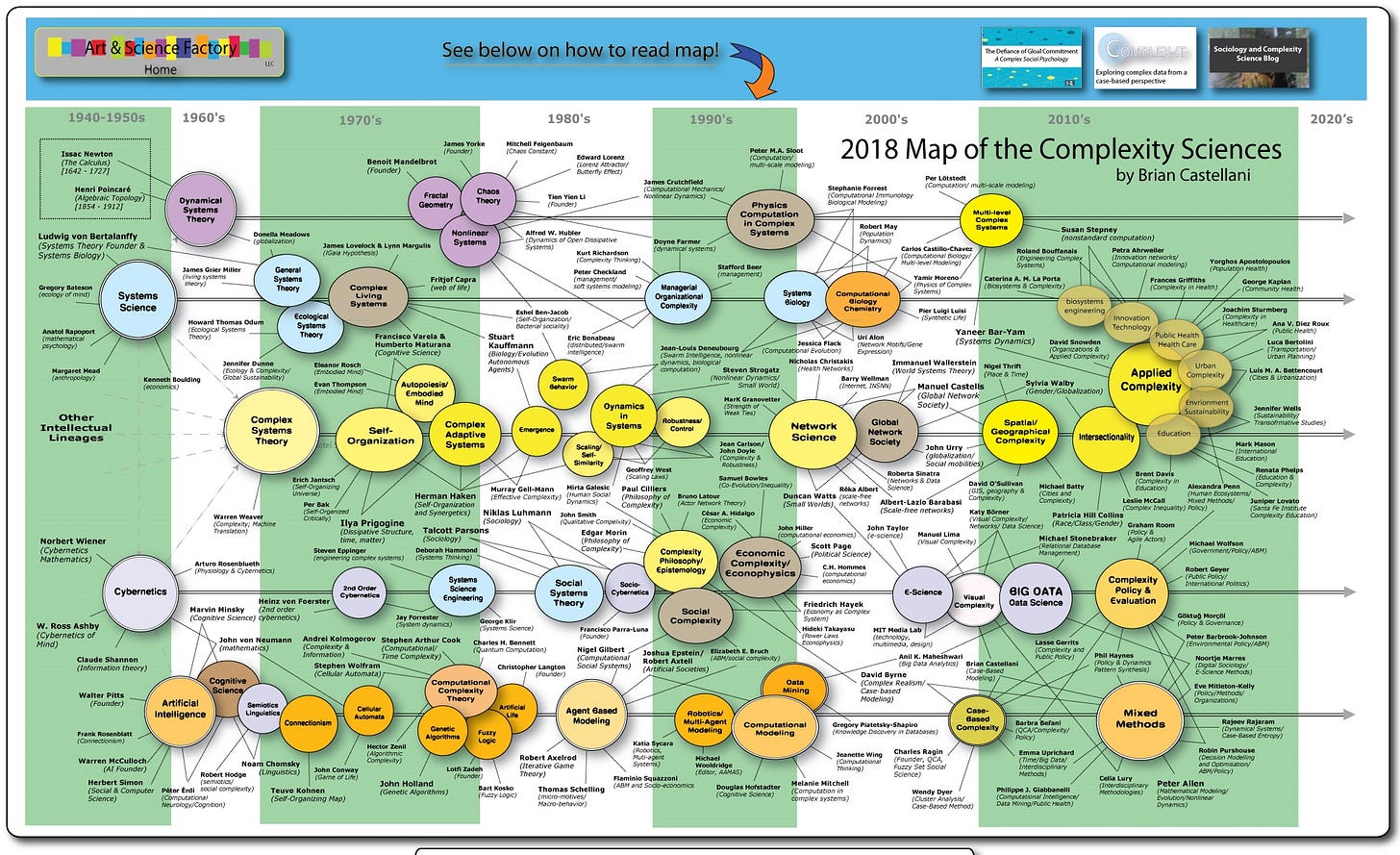I’m Luke Craven; this is another of my weekly explorations of how systems thinking and complexity can be used to drive real, transformative change in the public sector and beyond. The first issue explains what the newsletter is about; you can see all the issues here.
Hello, dear reader,
tl;dr: There is no fixed definition of systems thinking. Attempts to police the boundaries of the discipline based on particular definitions are unhelpful. We should approach the work of systems practice with an inclusive and pluralistic mindset.My last post was a critique of the role that “shared understanding” plays in systems and design practice. So often “shared understanding” is taken to mean consensus or unanimity, which is neither possible nor desirable in complex environments. We too frequently paper over meaningful difference in search of superficial alignment.
There is some deep irony to this conversation. Design and systems practitioners, respectively, spend a lot of time trying to build a shared consensus-based understanding about the boundaries of their disciplines. Some of this is undoubtedly driven by a genuine desire for clarity, consistency and rigor, but by focusing on questions like “what is systems thinking?” and “what is it not?” we divert attention away from more important questions like “what kind of alignment do we need?” and “what kind of difference are we comfortable with?”
There is no such thing as systems thinking
I don’t think this is a particularly controversial statement. Systems and complexity science has always been a broad church. In one of the better introductions to the field Complexity: A Guided Tour, author Melanie Mitchell notes:
“There is not yet a single science of complexity but rather several different sciences of complexity with different notions of what complexity means.” (p.19)
Brian Castellani’s map of the complexity sciences tracks the emergence of some of these different intellectual traditions over time. The map covers traditions that are significantly different on the fundamentals, including their respective definitions of complexity and their views on whether it is a problem that can be solved.
But of course, the map is not the territory. This is one attempt to make legible and codify what counts as complexity science and, by extension, what does not. While it might not be an objective view of the field, it does illuminate that systems and complexity theory are not homogenous entities. They are multiplicities or heterogenous unities constituted by their internal differences, which are themselves enacted by systems practitioners in different ways.
Enforcing fixed boundaries is an exercise of power
So what is to be done with this diversity? What kind of alignment do we need on the boundaries of systems thinking as a practice? What kind of difference are we comfortable with? My experience is that while the systems thinking community is often aligned on what alignment is necessary, there is wild disagreement about what kind of difference is tolerable. It is common to see fierce debate on the boundaries between systems thinking and complex systems thinking, for example, despite significant overlap in those practices and their application.

Similar debates exist about systems thinking being a convenient and trendy label for a lot of arguably non-systemic practice. I’m really not convinced that any of these debates really matter that much. They put far too much emphasis on immaterial disagreements about tolerable difference. They often use the views of one systems theorist to validate or invalidate entire fields of systems practice. They are almost always initiated by those that have a stake in pushing proprietary tools, methods and approaches that are tied to particular definitions of what systems thinking is and isn’t.
Judging systems practices on their consequences
Put simply, systems thinking can be practiced and enacted in different ways. That diversity is a strength, not a weakness. Yes, it is important to have alignment on the essentials, but only ever in the spirit of inclusion. Talk of this kind of pluralism tends to conjure a fear in the heart of purists that “anything goes” or that I am suggesting a kind of indiscriminate tolerance of anything that self-identifies as systems thinking. Far from it. Accepting that systems thinking can be enacted in different ways means that we need to judge different systems practices on their consequences rather than on their content.

This kind of pluralism is not easy. It requires hard conversations about the kind of outcomes we ought to value in different contexts. It demands we accept that the world and our attempts to understand it are not clean or definitive. As William James beautifully put it:
“As compared with all these rationalising pictures, the pluralistic empiricism which I profess offers but a sorry appearance. It is a turbid, muddled, gothic sort of affair without a sweeping outline and with little pictorial nobility.” (p.26)
Systems thinking is its own turbid, muddled affair and attempts to capture its essence have little pictorial nobility (no offence, Brian!). Let’s stop treating that like a problem and get on with the work of making a difference.
By the way: This newsletter is hard to categorise and probably not for everyone—but if you know unconventional thinkers who might enjoy it, please share it with them.
Find me elsewhere on the web at www.lukecraven.com, on Twitter @LukeCraven, on LinkedIn here, or by email at <luke.k.craven@gmail.com>.





A welcome contribution to those on their journey with systems thinking.